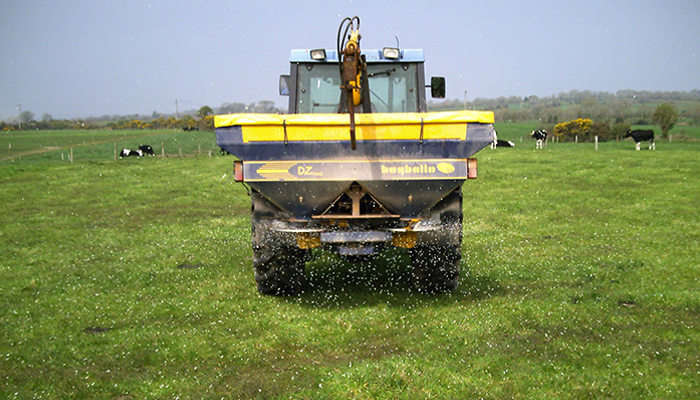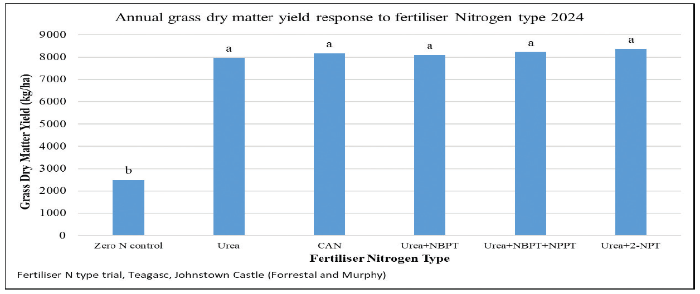21 November 2024
Don’t lose faith in protected urea

Although its performance has been questioned by some in the last year, protected urea does maintain grass growth when compared head-to-head with other forms of nitrogen fertiliser.
This was just one of the key messages delivered by Dr. Patrick Forrestal, Senior Research Officer at Teagasc Johnstown Castle, who took to the podium as part of the Teagasc National Beef Conference on November 19.
Addressing the topic of ‘practical nutrient management solutions that beef farmers can implement on their farms to increase efficiency, reduce costs and address environmental pressures facing the sector’, Dr. Forrestal shared data from the long-term grassland nitrogen fertiliser type experiment at Teagasc, Johnstown Castle, and he delved into the performance of various nitrogen-based fertilisers over the challenging growing season that was 2024.
Through this work, a range of nitrogen fertilisers including urea, CAN, and the protected urea products Urea + NBPT, Urea + NBPT + NPPT and Urea + 2-NPT were compared head-to-head and to a control receiving zero nitrogen input. All fertilisers were applied at the same rate, under the same conditions, at the same time and within a replicated setting.
Like so many farms across the country, the trial site did experience its weather-related challenges in 2024. In the spring, it was very wet all the way into April, and soil moisture deficits were present in June, July and August which restricted grass growth.
Commenting on the results to note from this experiment for 2024, as illustrated in figure 1 below, Dr. Forrestal said: “The lowest yield was for the zero nitrogen control. For the other treatments, across the harvests, there was no significant difference in yield. The grass dry matter yield in total wasn’t significantly different between the fertilisers. There was no effect of fertiliser choice.”
Dr. Forrestal added: “Protected urea does maintain grass growth when it is compared head-to-head with other forms of nitrogen and it will also reduce emissions which is important for the agriculture sector.”
Figure 1: Effect of fertiliser nitrogen source on grass dry matter yield in 2024, Treatments with differing lettering are significantly different (P≤0.05).

Commenting further on how this emissions reduction is achieved, Dr. Forrestal discussed a multi-site experiment, conducted over two years, which involved approximately 70,000 gas measurements, and compared the nitrous oxide emissions from CAN, straight urea and urea + NBPT.
He said: “Compared to CAN, urea + NBPT produced a reduction of approximately 70% in nitrous oxide losses from grassland. Protected urea based fertiliser has lower nitrous oxide emissions than CAN in the grassland setting and it can help us reduce greenhouse gas emissions.”
Although this experiment focused on NBPT as a protectant, other research conducted by Teagasc has verified other urease inhibitors, with Dr. Forrestal commenting: “The urease inhibitors that we recommend to protect urea against ammonia loss are NBPT, NBPT + NPPT or 2-NPT.”
If you were unable to attend the Teagasc National Beef Conference, a recording of Dr. Patrick Forrestal’s presentation is available to view below:
For further insights, read Dr. Forrestal’s paper for the Teagasc National Beef Conference here.
Also read: 2024 fertiliser N performance during a difficult grass-growing year
